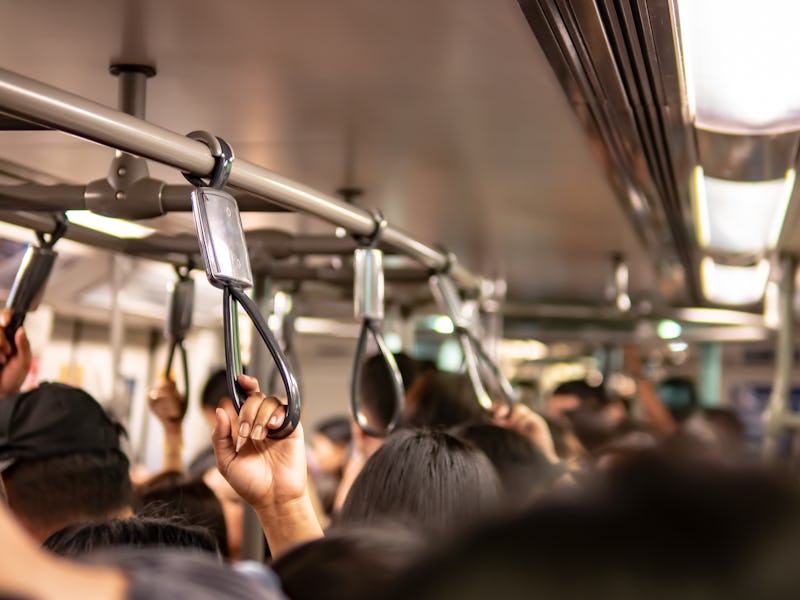Scientists reveal a global map that could help us track the next deadly pathogen
Enter the microscopic world of tiny city dwellers.

Picture this: you leave your house and hop onto a crowded bus to head to work or to meet up with a friend.
You touch the turnstile to pay for your fare. The bus sways, and you grab onto a pole for support before sitting down and leaning back on a chair. As your stop approaches, you yank the chain to signal to the driver that you need to get off.
Now zoom in: How many microbes did you encounter on this short ride? It might be hard to count, but two new studies mapped the presence of thousands of microbes across dozens of cities to create a sort of urban biome tracing — and it could make germaphobes squirm a little bit about the subway.
An aerial view of Tokyo, Japan. Recent research provides the first comprehensive look at the global urban microbiome.
What’s new — The first study, published in the journal Cell, creates the “first systematic, worldwide catalog of the urban microbial ecosystem.”
It presents a map of more than 4,000 samples from 60 cities across six continents, identifying both known and unknown microbes, including:
- 10,928 viruses
- 1,302 bacteria
- 2 archaea (a type of single-cell organism)
In the process, researchers found 4,246 known species — meaning the rest are new to science. A second map looks specifically at the profile of antibiotic-resistant superbugs in cities around the globe (spoiler alert: there are a ton of them).
Individuals can go to these maps and click on the profile for each city to find out, say, the percentage of bacteria in New York or the most prevalent types of antibiotic-resistant (AMR) bacteria in Los Angeles. The researchers concluded that each metropolitan area has its own unique microbe core.
The second related study, published in Microbiome, looks at the microorganisms in the air of public transit, such as subways or buses. Once again, the researchers found differences in the composition of microorganisms based on the geographic location.
But what’s more important — though perhaps not surprising — is that this study confirms that public transit truly is also a mess of human detritus. The researchers write: “human skin, soil, and wastewater were major [...] sources of public transit air.”
The researchers also found that public transit surfaces were also likely sources of microorganisms found in the air.
How they did it — The researchers launched a program known as the International Metagenomics and Metadesign of Subways and Urban Biomes (MetaSUB) Consortium in 2015 to fill the scientific gap in our knowledge on microbes in cities.
Since then, they’ve collected more than 4,000 samples from 60 cities.
Public transit surfaces are likely sources of microorganisms found in the air, according to one of the newest studies.
Why it matters — These studies aren’t just a fun — or gross, depending on your viewpoint — look at the tiny critters that surround urban dwellers. They could also help us track dangerous pathogens.
As we have learned from the past year dealing with Covid-19, viruses and pathogens can spread very quickly, especially within cities.
If updated regularly, we could use these maps to conduct “real-time monitoring of organisms, AMR genes, and pathogens” which “have the potential to reveal hidden microbial reservoirs and detect microbial transmission routes as they spread around the world,” the researchers write.
Surprisingly, the study found fewer antibiotic-resistant microorganisms in Oceania and the Middle East — though it’s not entirely clear whether that’s due to lower levels of antibiotic use or some other factor.
Plus, now that we know our relationship between public transit and our urban microbiome, researchers suggest these findings can help urban planners better design public buildings and structures to prioritize public health.
What’s next — The Cell study has three pretty important limitations that limit our ability to fully understand the urban microbiome.
These limitations include:
- Measuring only DNA, not RNA (for example, coronaviruses are RNA viruses, so this current microbe profile would not capture them)
- The study was unable to identify a significant percentage of the DNA included.
- The researchers could not always separate out anti-biotic resistant bacteria from similar microbes that might not be resistant.
But the researchers are confident that more data on urban microbes will help clarify some of these limitations. The scientists also state that the “microbial profile of cities can slightly shift year to year” so it’s important to keep updating the data so we can stay up-to-date on our microscopic friends.
Although researchers in the first study found no dangerous pathogens, researchers in the second study did identify C. acnes, which they describe as an “opportunistic pathogen” that should be monitored closely to see if it poses any risks to humans using public transit.
Ultimately, this map is just a first step in what will hopefully be a long line of studies on the teeny-tiny critters with whom we share our city streets and subways.
Summary: We present a global atlas of 4,728 metagenomic samples from mass-transit systems in 60 cities over 3 years, representing the first systematic, worldwide catalog of the urban microbial ecosystem. This atlas provides an annotated, geospatial profile of microbial strains, functional characteristics, antimicrobial resistance (AMR) markers, and genetic elements, including 10,928 viruses, 1,302 bacteria, 2 archaea, and 838,532 CRISPR arrays not found in reference databases. We identified 4,246 known species of urban microorganisms and a consistent set of 31 species found in 97% of samples that were distinct from human commensal organisms. Profiles of AMR genes varied widely in type and density across cities. Cities showed distinct microbial taxonomic signatures that were driven by climate and geographic differences. These results constitute a high-resolution global metagenomic atlas that enables discovery of organisms and genes, highlights potential public health Q1 Q2 and forensic applications, and provides a culture-independent view of AMR burden in cities.